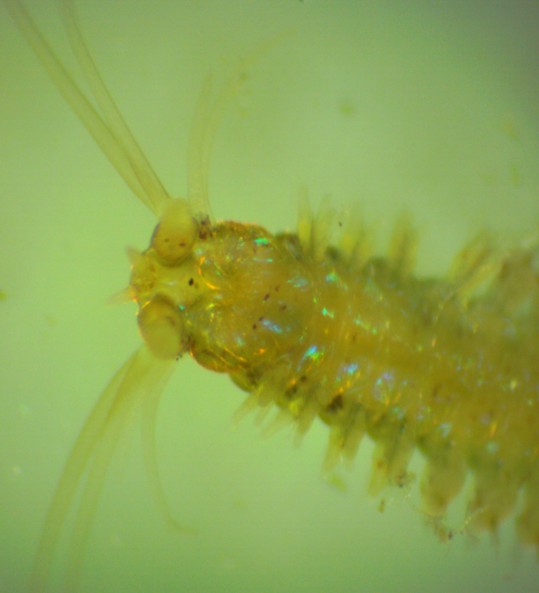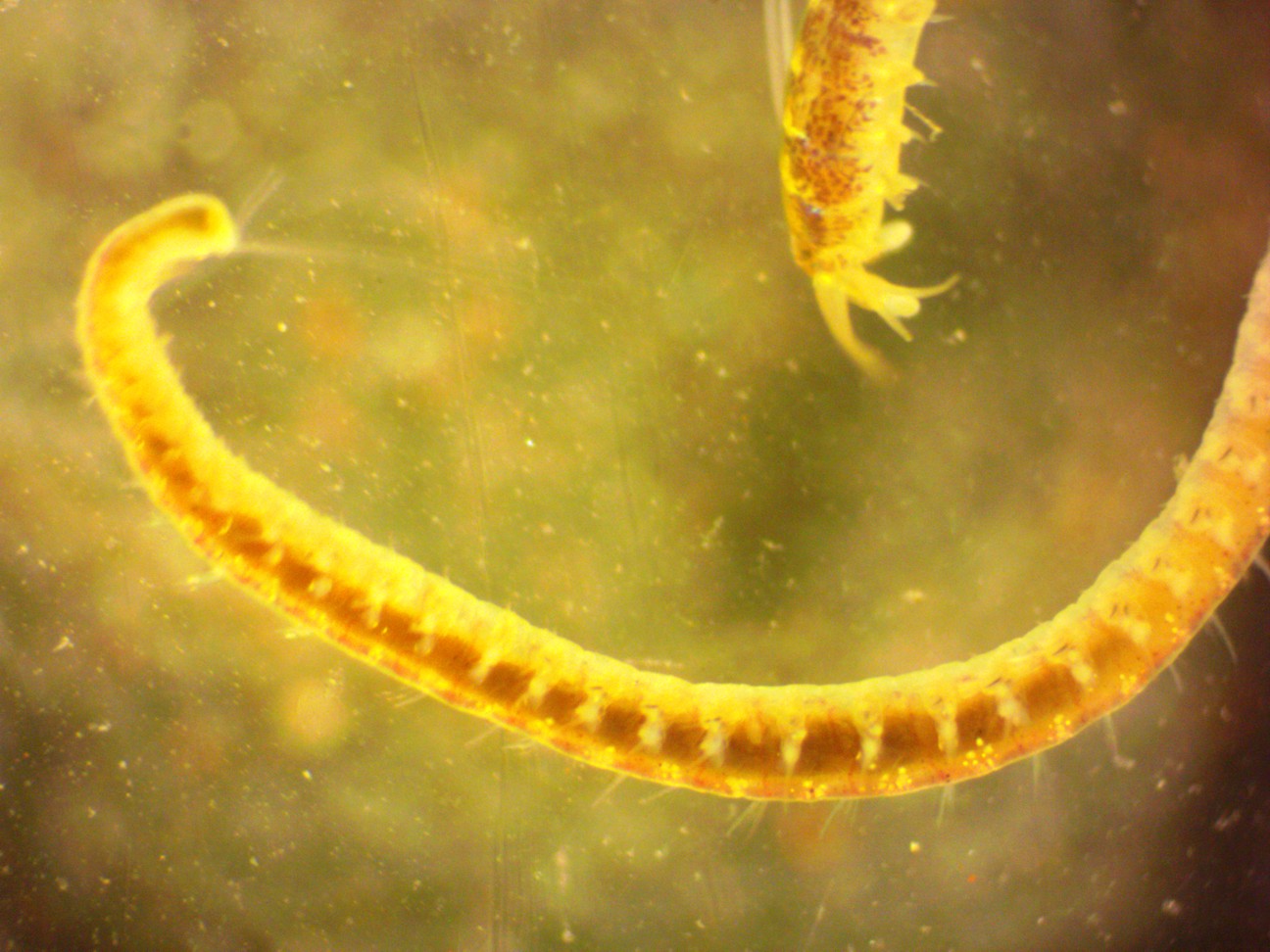Description: Members of family Hesionidae have segments at least as wide as they are long, and without dorsal elytra, paleae, or other setae. They have two prostomial anteroventral palps and peristomial tentacular cirri. Enlarged ventral cirri on the first several segments is a synapomorphy for this family. Micropodarke dubia has palps with 2 segments of approximately equal length (photo). Some of its setae are compound. It has 2 (not 3) prostomial antennae (photo) and two pairs of eyes (photo). The pharynx (photo) has no jaws nor teeth. The species has 6 pairs of tentacular cirri, 4 of which are on the peristomium (photo). There are large lobes at the bases of the parapodia. The pygidium has two cirri (photo). This individual is colored creamy white ventrally and has brown speckles dorsally.
How to Distinguish from
Similar Species:
Kefersteinia
cirrata and Podarkeopsis
brevipalpa have 8 pairs of tentacular
cirri. Ophiodromus
pugettensis has 3 prostomial
antennae
(two anteroventral
and one between them and slightly dorsal).
Note:
This species is identified only tentatively. Leslie Harris, a
polychaete specialist from the Los Angeles Museum of Natural History,
suggests that it is likely Platynereis
bicanaliculata instead.
Geographical Range: SE Alaska to central California, + Yellow Sea and Japan in the western Pacific.
Depth Range: Low intertidal to 40 m.
Habitat: Fine sand
Biology/Natural History:
I found
this individual crawling through the sediment attached to the rhizome
of
some subtidal Zostera
marina
eelgrass. The family description on the Tree of Life
(tolweb.org)
says that the few species studied from the family seem to be
predators.
However, this species has no jaws nor teeth in its pharynx, and its gut
was stuffed full of sediment when I found it. The sediment
was gradually
voided over several hours as I studied it.
| Return to: | |||
| Main Page | Alphabetic Index | Systematic Index | Glossary |
References:
Dichotomous Keys:Carlton, 2007
Kozloff, 1987, 1996
General References:
Scientific Articles:
Pleijel, Fredrik and Greg Rouse, 2005. A revision of Micropodarke (Psamathini, Hesionidae, Polychaeta). Journal of Natural History 39:17 pp 1313-1326
Web sites:
Tree of
Life Project
(family Hesionidae)
General Notes and Observations: Locations, abundances, unusual behaviors:
Although this animal was anesthetized, it never did stop a slight but continual writhing motion, which made it difficult to photograph with the microscope camera (which requires a slow shutter speed).
Right side view of the head. The long tentacular cirri are visible projecting to the right. The shorter prostomial palps project to the left.

Dorsal
view of the
head. Note the 4 dorsal
eyes and the two 2-segmented prostomial
palps
with the two segments
of similar length. The two prostomial
antennae can also be partly seen anteriorly.

This ventral
view
of the head shows the open mouth in the peristomium.
The pharynx
is inside
the mouth. This species has no teeth on its pharynx,
although this would not be visible unless the animal everted its pharynx.
The two prostomial
antennae can also be seen. The larger, 2-segmented palps
are extending from the prostomium
directly toward the viewer.

This view of the head (top right) and pygidium
(left) shows that the pygidium
has two long projecting cirri.
Authors and Editors of Page:
Dave Cowles (2014): Created original page
CSS coding for page developed by Jonathan Cowles (2007)
Salish Sea Invertebrates web site provided courtesy of Walla
Walla University
